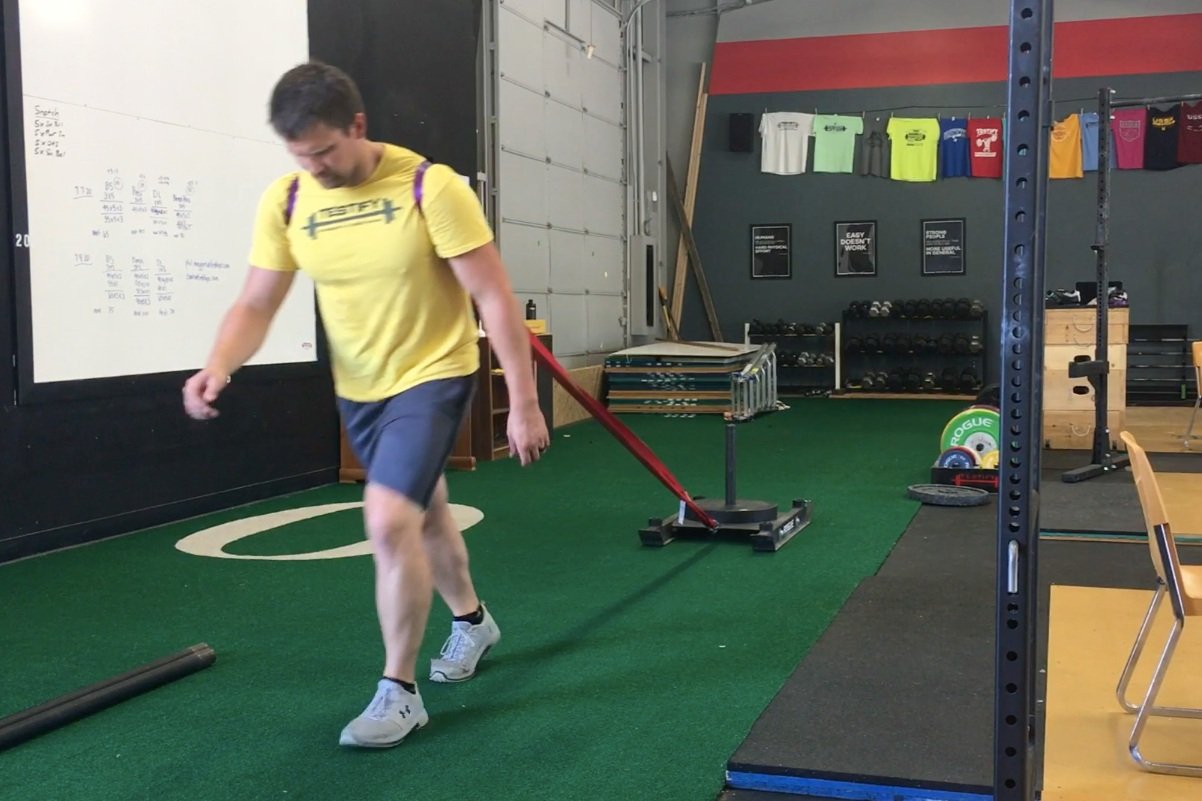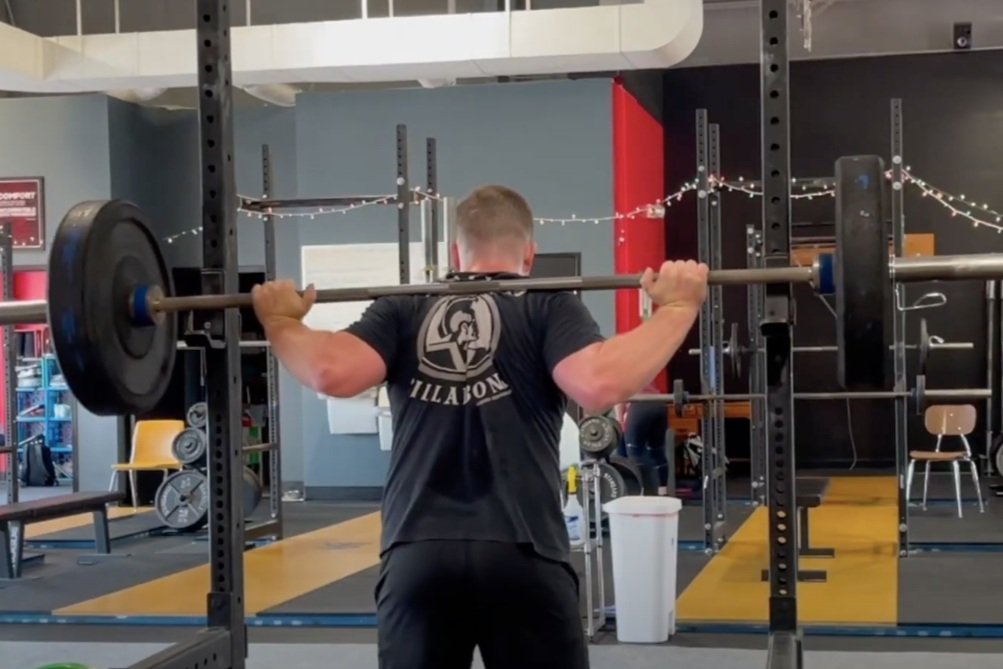DISASTROUS Weight Lifting Accident (don't let this happen...)
/This article is not thrilling, it’s not earth-shattering, but it might keep you from some broken toes or even teeth . . .
One of the more disastrous mistakes you can make in the weight room is that of loading or unloading the barbell by too many plates on one side (Figure 1). Let’s quickly discuss what this error looks like, when you’re most likely to commit it, and how you can easily avoid it.
figure 1: disaster narrowly averted (but watch out for sliding plates!)
What This Mistake Looks Like (i.e., how it happens)
Typically, this error occurs with 45 lb plates, although if you train in kilograms, it will probably occur with either 20 kg or 25 kg plates. Specifically, the mistake you’ll make is that of loading or unloading too many 45 lb plates on one side of the bar (i.e., compared to the other side).
For instance, you finish squatting 315 lb for the day, so you’ve got three 45 lb plates on each side of the bar. You’re tired, but you’re happy to have successfully performed your work sets. You absentmindedly begin unloading the right side of the bar while talking to a buddy or listening to some music. You take one plate off the bar - no problem yet. You then take another plate off the same side - you still might not have a problem.
However, you go to take the third plate off the right side of the bar - remember that you still have three 45 lb plates on the left side of the bar - and you suddenly have a cartwheeling barbell (see Figure 1). The right side of the bar rotates upward, the left side rotates downward, plates fall off in a loud (and dangerous) crash, the bar rotates end-over-end, and the entire room (people, equipment, walls, windows, etc.) is in danger.
If you’ve trained long enough or been to enough powerlifting meets, you’ve seen it happen at least once, it’s a disaster whenever it happens, and nearby people can and do sometimes get injured in the process if they get hit by the falling plates or flying barbell.
When You’re Most Likely to Make This Error
You can make this mistake when loading, but it is far more likely to occur when a lifter is unloading the bar.
figure 2: A one plate difference (two 45 lb plates on the left side and one 45 lb plate on the right side)
Loading the bar during warm-ups tends to promote symmetrical loading since - unless you’re a lifting psychopath - you’re only moving up by 90 lb at most per warm-up set. For instance, moving from 135 lb to 225 lb means you add a 45 lb plate on the left side and then walk over and add a 45 lb plate on the right side. At most, you’ve briefly got a one plate difference (i.e., one 45 lb plate difference) between the two sides of the barbell, and this doesn’t cause a problem (Figure 2).
However, when you’re finished with your 315 lb squat, your goal is to unload all the plates from the bar, and if you don’t approach this in a sensible fashion, you might start unloading all the plates from one side and soon cause a big ruckus.
This most often happens with the squat, but it can happen on the bench or press as well, and if you’re fortunate enough to train with a deadlift jack, it can happen when unloading your deadlift (since a deadlift jack functions much like a pair of j-hooks on a squat rack). I’ve seen a fellow lifter nearly get popped right in the teeth by the barbell after absentmindedly unloading four 45 lb plates from one side of the bar before removing any of the plates from the other side.
The Easy Way to Prevent It
The easiest way to prevent this mistake and the potential disaster that accompanies it is to make the following rule:
No more than one 45 lb plate difference between the two sides of the bar.
For example, if you have two 45 lb plates on the left side of the bar and you’re using this rule, then the following are acceptable for the right side of the bar:
Three 45 lb plates (one plate difference)
Two 45 lb plates (no difference)
One 45 lb plate (one plate difference)
However, having either four or zero 45 lb plates on the right side of the bar is a no-go. Those situations are not guaranteed to cause a problem, but you’re starting to flirt with disaster. This rule does not give you the only safe method, but it does guarantee a simple and safe approach that’s easy to remember.
Keep that one plate difference in mind (which is sometimes the hardest part!), and we hope this helps you get stronger, live better, and also live without any unnecessary broken stuff!
-Phil
PS: Whenever you want even more Testify in your life, here are some free resources:
Book a free intro and strategy session with us HERE.
Pick up a free copy of Testify’s Squat Guide: 12 Tips to Improve Your Squat Now HERE.
Get our free weekly email - containing useful videos, articles, and training tips - HERE.
Follow Testify on Instagram HERE.
Subscribe to Testify’s YouTube channel HERE.
(Some links may be affiliate links. As an Amazon Associate, Testify earns from qualifying purchases.)











